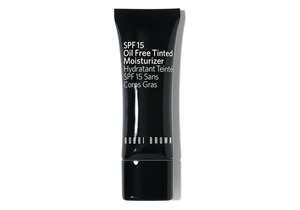1. THOU SHALT NOT USE BRONZER AS
CONTOUR.
Shadows are not tan, they have not been to the Bahamas.
2. THOU SHALT TAKE INTO CONSIDERATION THE TIME AND PLACE WHEN CONTOURING.
Pageant? Drag show? CNN? Tear it up…go full Kardashian Class? Church? General Public? Go easy and remember that actual people are looking at your actual face (with their actual eyes) Unless you want them to actually laugh at you, you should not look like you fell asleep on a Snickers bar.
SNICKERS FOR A SNACK, NOT ON YOUR FACE
3. THOU SHALT STEP AWAY FROM THE
SPARKLY SHIT WHEN IT COMES TO THE
HIGHLIGHTING STEP.
4. THOU SHALT BLEND.
And blend again. And, Sweet Cosmetic Jesus, blend again. Especially on your damn nose…it looks like you rolled an Oreo down the thing for fun.
5. THOU SHALT NOT USE INSTAGRAM,
PINTEREST OR YOUTUBE AS REFERENCE FOR HOW TO CONTOUR YOUR FACE.
Call a pro, ask them how to best YOUR “bring your best face forward” and take some serious notes. And maybe some video. These girls know how to contour their own faces, not yours. Hire a pro!
6. THOU SHALT REMEMBER TO ADD COLOUR TO YOUR “SCLUPTED” FACE WITH A LOVELY SHADE OF BLUSH TO BRING IT ALL TOGETHER.
And then thou shalt BLEND. ONE MORE TIME, BLEND.
7. THOU SHALT STEP INTO THE GLORIOUS
SUNLIGHT WITH A MIRROR AND TAKE INTO CONSIDERATION WHETHER OR NOT YOU’RE ACTUALLY PULLING THIS OFF.
And then thou shalt BLEND.
8. THOU SHALT ALWAYS CONSIDER THE TONE OF ONE’S OWN SKIN WHEN CHOOSING THE PROPER CONTOURING AND HIGHLIGHTING PRODUCTS.
One shade does NOT fit all. Ever.
9. THOU SHALT REFRAIN FROM TELLING
THINE PROFESSIONAL MAKE UP ARTIST HOW TO PROPERLY DO THEIR JOB.
Especially when it comes to Highlighting & Contouring, lest their eyes become permanently lodged in the backs of their skulls rendering them unable to finish your ridiculous face.
10. NEVER DRAW A PENIS ON YOUR NOSE.
EVER.
LET IT BE SO.
What other commandments of Highlighting & Contouring should be added to this list?
CONTOUR.
Shadows are not tan, they have not been to the Bahamas.
2. THOU SHALT TAKE INTO CONSIDERATION THE TIME AND PLACE WHEN CONTOURING.
Pageant? Drag show? CNN? Tear it up…go full Kardashian Class? Church? General Public? Go easy and remember that actual people are looking at your actual face (with their actual eyes) Unless you want them to actually laugh at you, you should not look like you fell asleep on a Snickers bar.
SNICKERS FOR A SNACK, NOT ON YOUR FACE
3. THOU SHALT STEP AWAY FROM THE
SPARKLY SHIT WHEN IT COMES TO THE
HIGHLIGHTING STEP.
4. THOU SHALT BLEND.
And blend again. And, Sweet Cosmetic Jesus, blend again. Especially on your damn nose…it looks like you rolled an Oreo down the thing for fun.
5. THOU SHALT NOT USE INSTAGRAM,
PINTEREST OR YOUTUBE AS REFERENCE FOR HOW TO CONTOUR YOUR FACE.
Call a pro, ask them how to best YOUR “bring your best face forward” and take some serious notes. And maybe some video. These girls know how to contour their own faces, not yours. Hire a pro!
6. THOU SHALT REMEMBER TO ADD COLOUR TO YOUR “SCLUPTED” FACE WITH A LOVELY SHADE OF BLUSH TO BRING IT ALL TOGETHER.
And then thou shalt BLEND. ONE MORE TIME, BLEND.
7. THOU SHALT STEP INTO THE GLORIOUS
SUNLIGHT WITH A MIRROR AND TAKE INTO CONSIDERATION WHETHER OR NOT YOU’RE ACTUALLY PULLING THIS OFF.
And then thou shalt BLEND.
8. THOU SHALT ALWAYS CONSIDER THE TONE OF ONE’S OWN SKIN WHEN CHOOSING THE PROPER CONTOURING AND HIGHLIGHTING PRODUCTS.
One shade does NOT fit all. Ever.
9. THOU SHALT REFRAIN FROM TELLING
THINE PROFESSIONAL MAKE UP ARTIST HOW TO PROPERLY DO THEIR JOB.
Especially when it comes to Highlighting & Contouring, lest their eyes become permanently lodged in the backs of their skulls rendering them unable to finish your ridiculous face.
10. NEVER DRAW A PENIS ON YOUR NOSE.
EVER.
LET IT BE SO.
What other commandments of Highlighting & Contouring should be added to this list?












